
“Raise a banner on a bare hilltop, shout to them; beckon to them to enter the gates...” —Isaiah 13:2
The Battle of Franklin, November 30, 1864
 n the last day of November, 1864, in a grand assault composed of more than 20,000 men, the Confederate Army of Tennessee breasted a blizzard of rifle and cannon fire from an equal number of Union soldiers dug in behind solid entrenchments encircling the town of Franklin, Tennessee. More than six thousand of the attackers were shot down in the fields, ditches and house yards, as they inflicted more than two thousand casualties on the defenders, but, in the end, they were driven back over the fields of slaughter. The effusion of blood proved the death-knell of Confederate fortunes in the “western theater” of the war and provided historians for the next one hundred fifty years with controversy, stunning description and post-battle pathos to match any battle fought in the American Civil War. n the last day of November, 1864, in a grand assault composed of more than 20,000 men, the Confederate Army of Tennessee breasted a blizzard of rifle and cannon fire from an equal number of Union soldiers dug in behind solid entrenchments encircling the town of Franklin, Tennessee. More than six thousand of the attackers were shot down in the fields, ditches and house yards, as they inflicted more than two thousand casualties on the defenders, but, in the end, they were driven back over the fields of slaughter. The effusion of blood proved the death-knell of Confederate fortunes in the “western theater” of the war and provided historians for the next one hundred fifty years with controversy, stunning description and post-battle pathos to match any battle fought in the American Civil War.
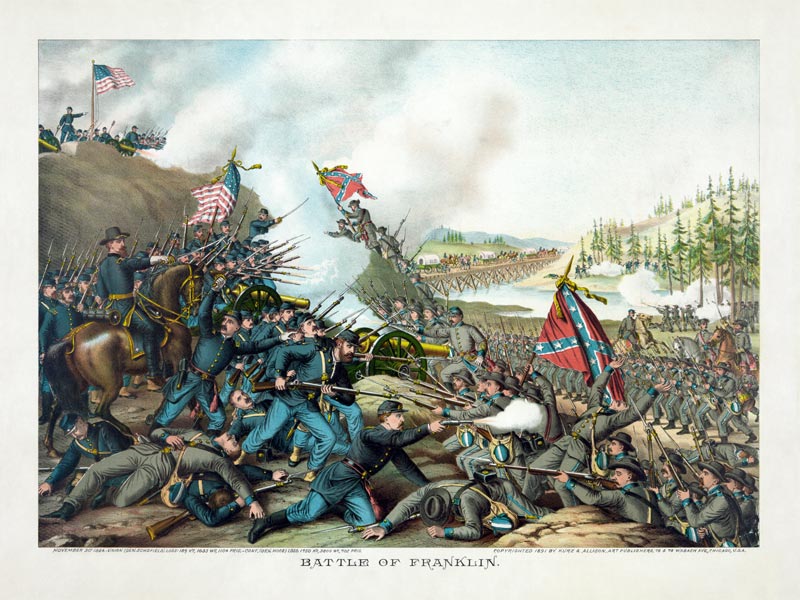
The Battle of Franklin, as depicted by Kurz and Allison, 1891
After the fall of Atlanta, Confederate General John Bell Hood moved his army north toward Chattanooga in an attempt to get astride Union General William T. Sherman’s communications and supply line and draw him away from the Atlanta area. Instead, Sherman launched an invasion through the heart of Georgia, living off the land on a march to the sea. Hood moved north in an attempt to threaten and maybe capture Nashville and its mountains of supplies, and destroy the Union forces defending the city.
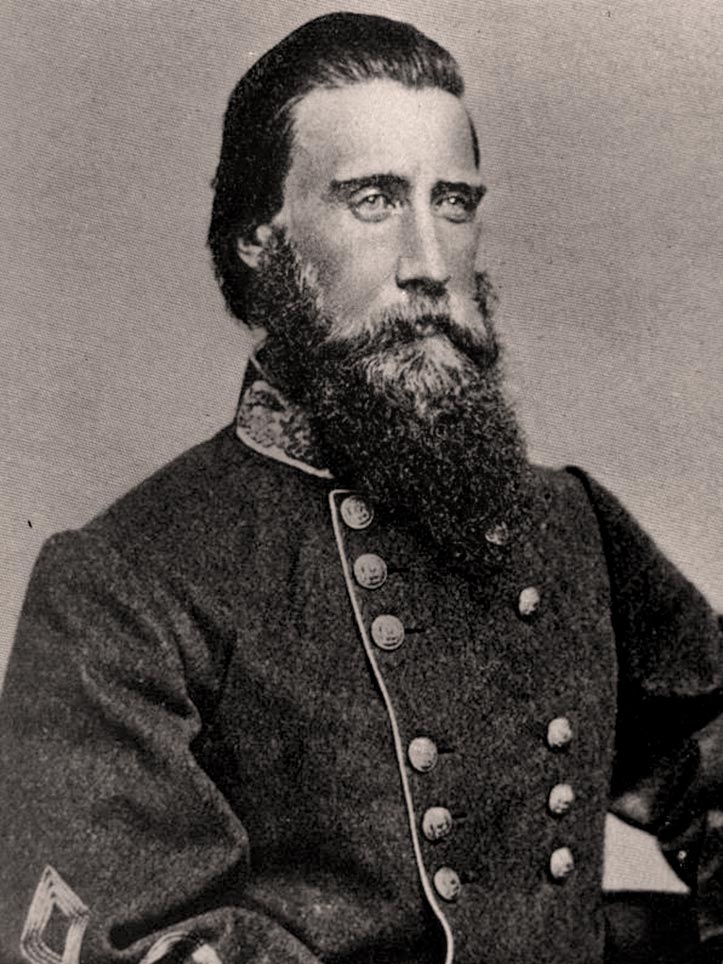
Confederate General John Bell Hood
(1831-1879)
|
|
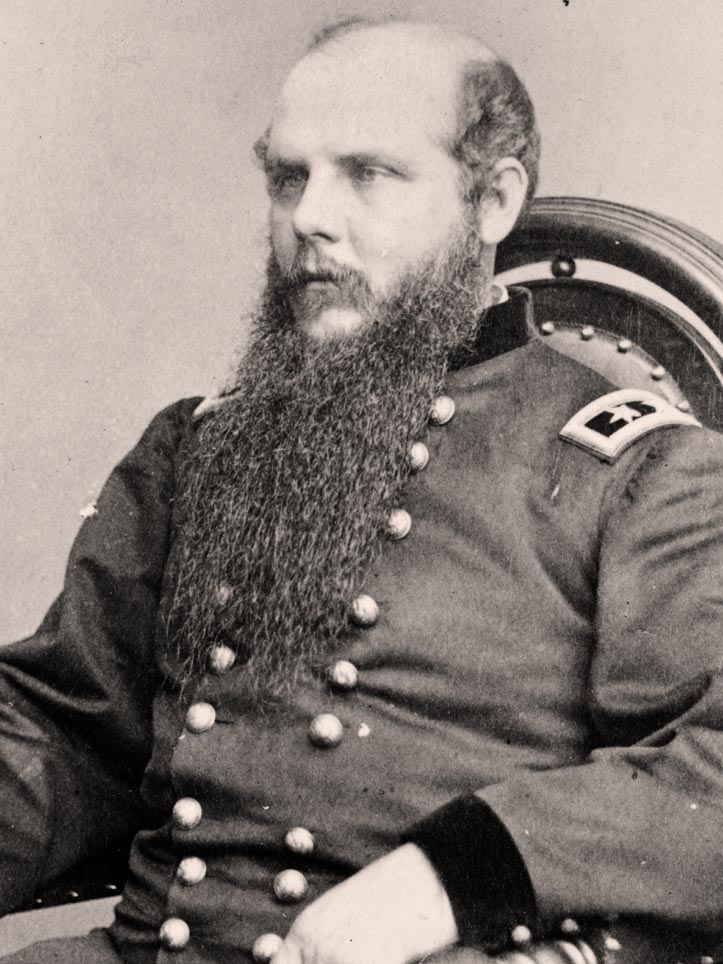
Union General John McAllister Schofield
(1831-1906)
|
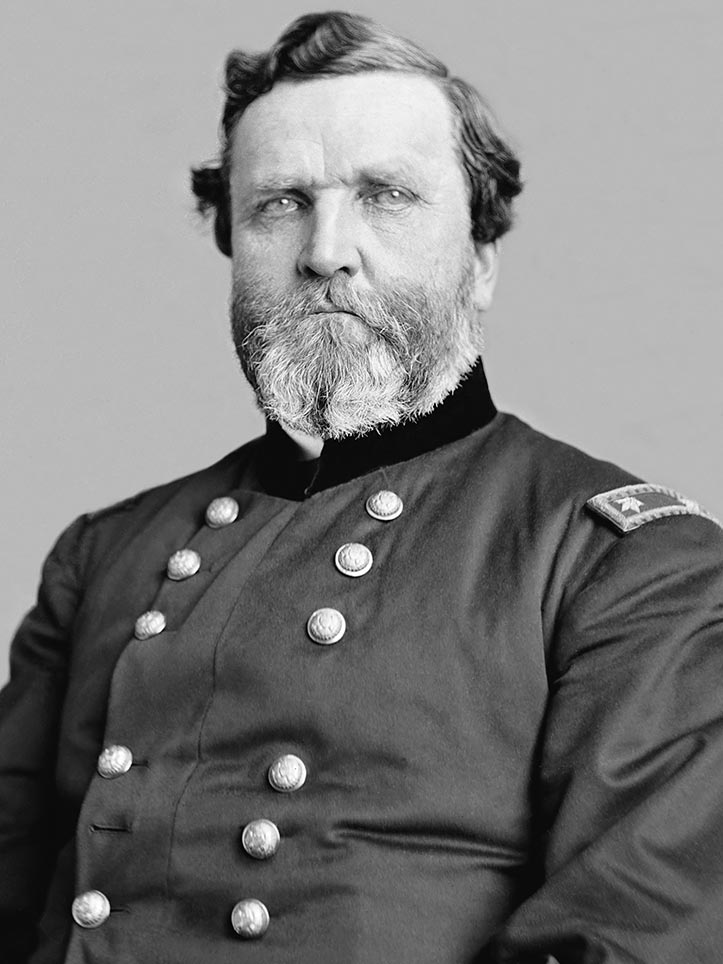
George Henry Thomas (1816-1870)
|
Virginia-born Union General George “The Rock of Chickamauga” Thomas commanded the Army of the Cumberland defending Nashville. Directly opposing Hood’s army was a mostly veteran force under General John Schofield, an old West Point classmate of Hood. While facing each other across the Duck River at Columbia, Tennessee, Hood moved upstream to cut off Schofield’s line of retreat at the village of Spring Hill. After a brisk skirmish along the Columbia Turnpike, the Confederate army settled into camp for the night. Schofield, realizing his imminent danger, successfully marched his entire army through the Confederate lines during the night without detection, sparking a controversy among Confederate apologists, regarding blame for the fatal oversite that has lasted to this day. Furious at the escape of the Yankees, Hood sent his army after them, streaming north on the turnpike.
Schofield’s forces stopped about thirteen miles north of Spring Hill at the town of Franklin. They filed into the entrenchments around the town and began digging and improving the works in preparation fo a possible Confederate attack. Artillery was placed to enfilade attackers, as well as pound them from the front. The Union line presented a defense far more formidable than the one faced by Confederate General Pickett’s formations on the third day at Gettysburg a year and a half earlier.
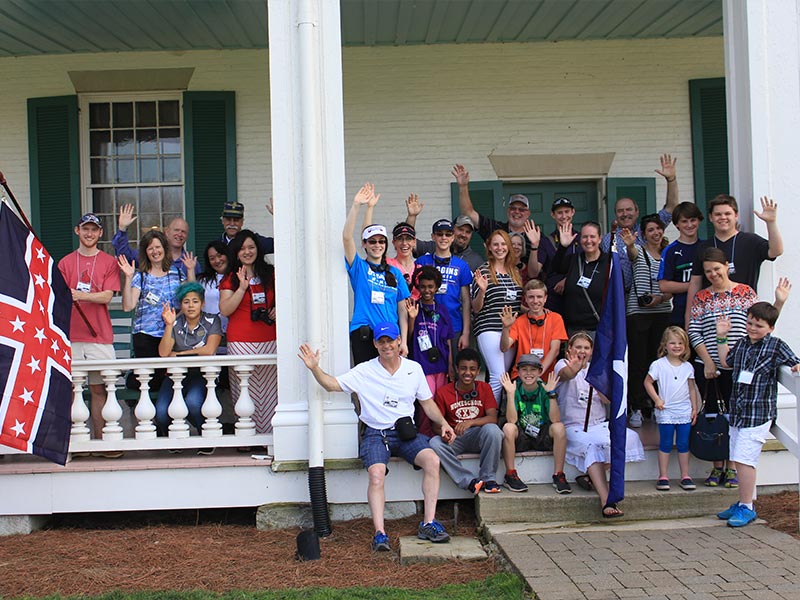
The 2017 Civil War in the West Tour on the porch of Carnton Plantation, Franklin, Tennessee
As Hood’s Confederates arrived near Winsted Hill, two miles from the Union lines, he ordered a grand assault across a two-mile front cleared of trees and obstacles against the entrenched enemy. The heroic and futile attack would be forever etched on the minds of the men who witnessed it and survived the slaughter of that day. Fourteen Confederate generals fell, six of them killed, along with an astounding fifty-five regimental commanders who became casualties — killed, wounded or captured.
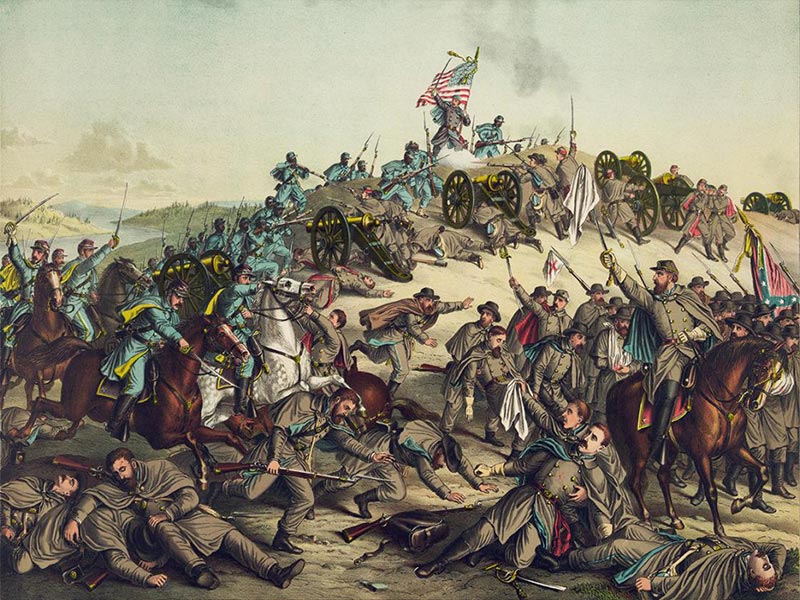
The Battle of Nashville, as depicted by Kurz and Allison, c. 1888
The Federal forces marched away that night and filed into the impregnable defenses of Nashville to await General Hood’s inevitable arrival, where he would be outnumbered about 55,000 to 26,000. The faithful remnant of Confederate troops was smashed there to rise no more in Tennessee. In Franklin, the job of burying the dead and helping the wounded fell to the few Confederate surgeons and the women of the town, from which came the astounding story of “the widow of the South”, Carrie McGavock.

Peruse These Landmark Events Articles to
Learn More about the Battle of Franklin
Plus, Personally Experience the Battle
on the Ground Where it Happened This Spring with Landmark Events Military Historian Bill Potter
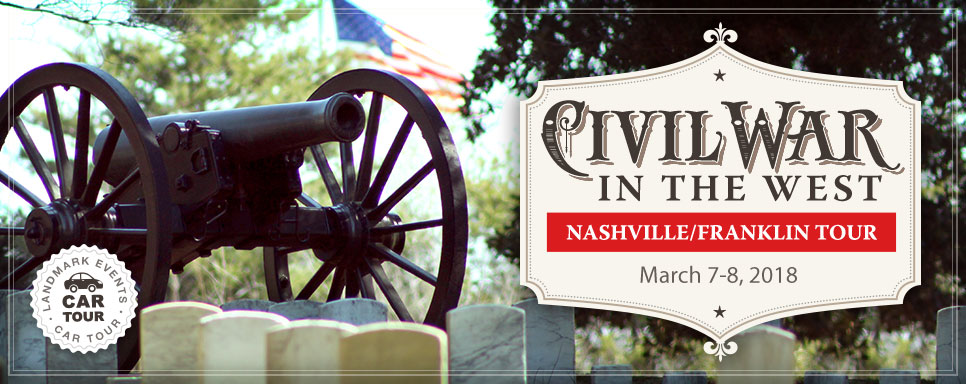

Image Credits:
1 The Battle of Franklin (Wikipedia.org)
2 John Bell Hood (Wikipedia.org)
3 John McAllister Schofield (LOC.gov)
4 George Thomas (Wikipedia.org)
5 Battle of Nashville (Wikipedia.org)
|







